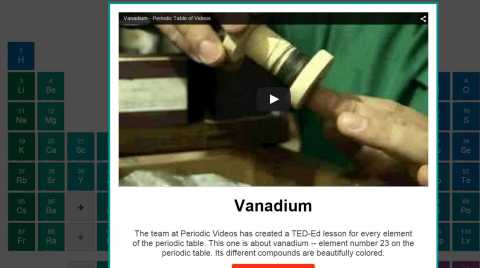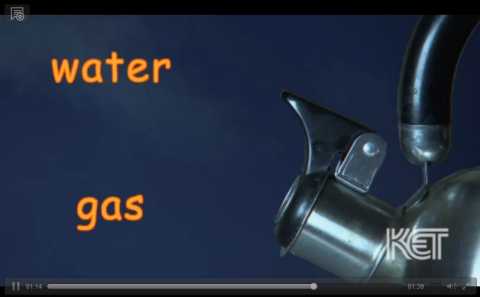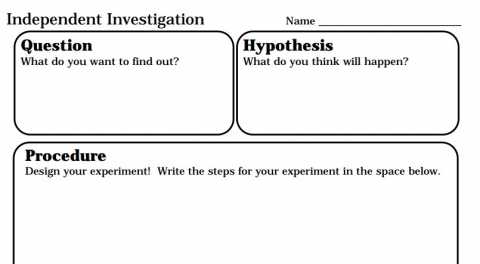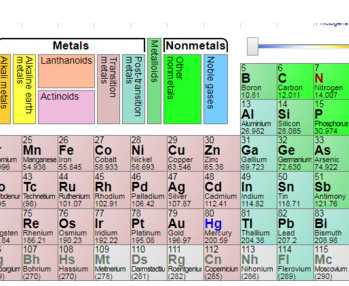The chemistry of making cookies. Video
Here is a video that discusses all of the chemical reactions that occur when cooking a cookie. Great video to show the science behind cooking.
Here is a video that discusses all of the chemical reactions that occur when cooking a cookie. Great video to show the science behind cooking.

Here is a website that shows the periodic table of elements. What is unique about it, is that for each element there is a linked video file describing it and showing it off.
Have you ever wondered what those packets that say "don't eat" on them? You know those packets found in shoe boxes, jerky packages, and leather products. SciShow discusses the chemicals found within and how mankind is using them to absorb moisture out of the air.
The ability to watch supercooled water turn instantly to ice is quite popular right now on the internet. Here is a video that will discuss why disturbing supercooled water will make the water turn to a solid. It discusses how the process is done and the chemistry behind water molecules.

This video is a simple demonstration of the different types of matter: gas, liquid, and solid. This video also has worksheets and activities that go with it.

This is an animated video about the states of matter from StudyJams. They do an excellent job explaining the different states: solids, liquids, and gasses. Condensation, Evaporation, and Melting point are other terms used in the video.

Here is a handout to give students when they are about to do a science experiment. It will help them focus on the procedure of the scientific method.
It's all about attraction. This video discusses covalent and ionic bonding as well as the more basic structure of atoms and molecules.
I show this volcano video when discussing cinder cone volcanoes. Paricutin erupted in 1943 and erupted for 9 years afterward. It occurred on fairly flat land in a farmer's cornfield. This video is historical footage of the eruption.

This Google search activity allows students to go to the internet to search for specific minerals and then to use the Periodic Table to discover what elements the mineral is made out of. This activity usually takes a full 50 minutes for the students to find all of the answers. Students will investigate 12 different minerals and which elements make the mineral up. They will look at a periodic table and decide whether the elements are metals or nonmetals. Students will also search the internet and find out some industrial uses for each mineral.